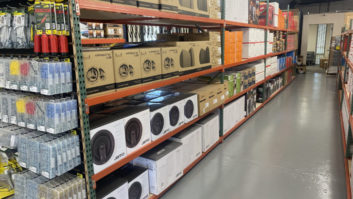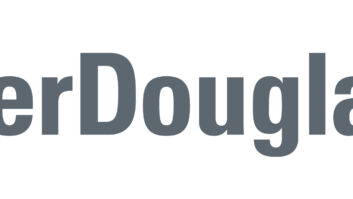Leading majap makers Whirlpool and Maytag are predicting low single-digit sales gains for the U.S. white goods industry during the balance of 2002.
Speaking before analysts at Salomon Smith Barney’s recent Global Industrial Manufacturing Conference here, Whirlpool chairman/CEO David Whitwam said that his company has increased its industrywide, full-year unit shipment forecast to 2 percent growth, reflecting continuing industry improvement.
“Given the continuing positive momentum of our business and the unexpected strength of the U.S. appliance industry so far this year, we expect to deliver another solid performance in 2002,” he said prior to the presentation.
The outlook represents a rebound from last year’s results, when total factory shipments slipped 0.6 percent for the full year and fell 9.8 percent for the first quarter, according to the Association of Home Appliance Manufacturers (AHAM).
Maytag essentially echoed Whitwam’s outlook in a recent sales and earnings forecast, in which chairman/CEO Ralph Hake predicted an increase in industry shipments of 2 percent to 3 percent for the full year.
Hake, who also addressed analysts at the financial community conference, said that Maytag’s own sales are expected to grow 10 percent to 15 percent year-over-year, thanks to the addition of the Amana portfolio and increased demand for major appliances and floor care products.
In its financial forecast, Maytag reported strong January and February sales owing to depleted dealer inventories, and said that first quarter sales will be up 20 percent over the year-ago period, while earnings will significantly exceed initial expectations.
“Our major appliance sales have been much stronger than expected,” Hake noted in the earnings alert. “Industrywide major appliance sales were up over 10 percent through February, compared to the relatively weak first two months of 2001.
“It is now clear that our earnings” — whose per share performance is expected to rocket 50 percent — “will substantially exceed both our fourth-quarter performance and our previous first-quarter expectations,” he said.
However, Hake stressed that it is unlikely that the industry will be able to maintain a double-digit growth rate for the balance of the year. “We do not expect year-over-year major appliance industry-shipment gains to be near the pace they were in the first two months,” he said.
Moreover, in its annual report released last month, Maytag predicted that the major appliance and floor care sectors together will be “flat to up slightly” compared to their combined performance in 2001.
The report noted that floor care sales may be negatively impacted for the first six months of the year by the bankruptcy filing in January of a “major national retailer,” ostensibly Kmart.
At the analyst conference, Whirlpool’s Whitwam also acknowledged improved U.S. appliance industry conditions in January and February. He added that the company’s “global innovation effort” — exemplified by such recent product launches as the Polara refrigerated cooking range, the Duet front-loading clothes washer, and the Personal Valet clothes refreshening system — has helped make Whirlpool the world’s No. 1-selling home appliance brand. He pegged Whirlpool’s global market share as “40 percent higher” than its closest international competitor.
Swedish majap maker Electrolux, which lays claim to the title of world’s largest appliance manufacturer, has also acknowledged a thawing in the U.S. market.
In an interview with Reuters, executive VP Johan Bygge described the company as guardedly optimistic about a U.S. economic rebound, based on steadily improving sales within its outdoor consumer products unit. He said the division, which makes lawn mowers and other garden equipment, is regarded by Electrolux as a good barometer of consumer sentiment.













